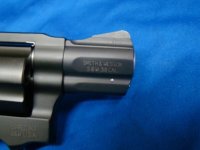The marketing term "Hi-Speed" was applied to other cartridges as well. The .44-40, for instance, was at one time produced in such a loading and was (I assume) intended to rifles. I don't have any reference material at hand, so I'm not sure if the .38-40 and .32-20 were also produced in a hi-speed loading or not. This is all pre-war stuff, of course.
Along the same lines, Colt listed the .38-44 among the cartridges that could be used in their Police Positive Special revolver but S&W did not list it for the K-frame M&P revolver in the pre-war days. The large frame .38 revolvers from S&W were the .38-44 Heavy Duty and Outdoorsman.
Along the same lines, Colt listed the .38-44 among the cartridges that could be used in their Police Positive Special revolver but S&W did not list it for the K-frame M&P revolver in the pre-war days. The large frame .38 revolvers from S&W were the .38-44 Heavy Duty and Outdoorsman.


